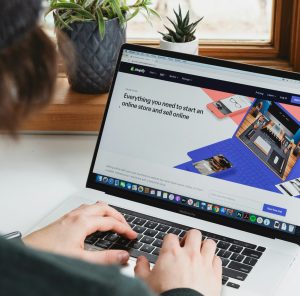The three main characteristics listed below are what make a website “responsive,” according to Ethan Marcotte, a web designer and developer who invented responsive web design: To understand how these features work, let’s focus on their concept. Fluid grid design is a web design principle that allows layouts to be divided into multiple columns and rows, simplifying the design and providing custom arrangement and alignment. It operates responsively to screen width, ensuring a smooth user experience on each device. Fluid uses percentages as an alternative to pixels, allowing for flexible and automatically adjusted layouts. Key elements of a flexible grid include columns, rows, sizes, gaps, spacing, and flow algorithms. However, most existing grid systems restrict the application of CSS classes, which can be time-consuming and complicate the process. Fluid layout puts control of designs in users’ hands, ensuring a consistent look and feel across different devices. A website’s image is crucial for its compatibility with screen size and content. To limit visual spaces on smaller devices, web designers can use CSS overflow to crop images flexibly. This property allows for proportional size adjustments when shifting to smaller interfaces, ensuring the image loads appropriately for the screen size. Media queries are crucial for responsive web design, as they help websites detect user devices and create layouts based on display parameters like display size, page orientation, colors, and resolutions. They are essential for creating fluid grids and flexible images, but they only function smoothly if they are already in place. Media queries consist of two elements: a media type and expressions that check device features and physical characteristics. They allow designers to think beyond screen size and resolution constraints, creating more flexible adaptations for different mediums and providing a more tailored user experience. Responsive web design ensures a consistent version that runs across devices, reducing the need for multiple updates and fixes. This is advantageous for web designers, as having two versions on desktop and mobile can increase the cost and maintenance of the website. RWD offers a single URL, reducing SEO costs and improving effectiveness while also being feasible and time-saving for content uploading and management. Consistency is a crucial aspect of branding, and RWD ensures web functionality across devices, enhancing brand presence and identity, and thus boosting brand awareness. The unity of UI enhances user-friendliness and navigation on the website, thereby enhancing the UX and encouraging users to explore longer. RWD optimizes page data processing by compressing files and offloading heavy data, reducing processing time for complex effects and slides. Responsive Web Design services aim to provide flexible, tailored interfaces for multiple devices, ensuring visual transitions through multiple browser windows. This process requires careful calculation and heavy time investment, but the outcomes are timeless and optimized for later maintenance. Instead of manually modifying across mediums, a responsive web design may be a good solution.
Definition, Best Practices, and Benefits of
Three Crucial Elements of Responsive Website Design

Fluid Grid: Automatically Fits across devices

Flexible Visuals

Media queries

The Five Benefits of Responsive Website Design

Save Maintenance costs.
Effective SEO and Content Management
Build consistent Brand Awareness

Utility in Manipulation
Optimize Page Speed
conclusion





No comment